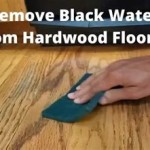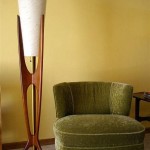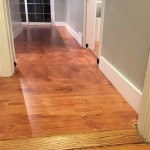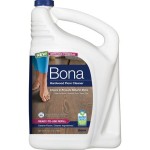Stripping And Waxing Wood Floors: A Comprehensive Guide
Wood floors, prized for their natural beauty and durability, require regular maintenance to preserve their aesthetic appeal and longevity. Stripping and waxing are two distinct processes often employed, either separately or sequentially, to restore and protect wood floors. Understanding the purpose, procedures, and considerations associated with each technique is crucial for achieving optimal results and avoiding potential damage.
Stripping refers to the removal of old layers of finish, dirt, and embedded grime from the wood surface. This process prepares the floor for refinishing or the application of a new protective coating. Waxing, on the other hand, involves applying a layer of wax to the floor to create a protective barrier, enhance its shine, and provide a degree of resistance against scratches and minor spills. While some newer floor finishes negate the need for waxing, older finishes, particularly those found on antique or historically significant floors, often benefit from a regular waxing regimen.
The decision to strip and wax a wood floor depends on its existing condition, the type of finish applied, and the desired aesthetic outcome. Assessing the floor carefully before undertaking either process is essential to ensure the chosen method is appropriate and will not cause irreversible harm. Incorrect techniques or the use of incompatible products can lead to damage, discoloration, or an uneven finish.
Determining the Need for Stripping
Several indicators suggest that a wood floor may require stripping. One of the most common signs is the presence of multiple layers of old, yellowed, or chipped finish. Over time, layers of polish and wax can build up, creating a dull or uneven appearance. This buildup can also trap dirt and grime, making the floor difficult to clean effectively. Another indicator is the existence of embedded stains or scratches that cannot be removed with conventional cleaning methods. If the floor has been repeatedly coated with different types of finishes over the years, stripping may be necessary to create a uniform surface for a new finish.
Before starting the stripping process, it is crucial to identify the type of finish that is currently on the floor. Older floors often have shellac, varnish, or lacquer finishes, while newer floors typically have polyurethane or water-based finishes. The type of finish will determine the appropriate stripping agent and technique. Testing a small, inconspicuous area of the floor with different stripping agents can help determine which one is most effective and least damaging. When choosing a stripping agent, prioritize those specifically designed for wood floors and follow the manufacturer's instructions carefully.
The process of stripping a wood floor can be labor-intensive and may require specialized equipment. Depending on the size of the area and the severity of the buildup, manual stripping with chemical strippers and scrapers may be sufficient. However, for larger areas or floors with particularly stubborn finishes, mechanical sanding may be necessary. Safety precautions, such as wearing appropriate protective gear, including gloves, eye protection, and a respirator, are essential when working with chemical strippers or sanding equipment. Proper ventilation is also crucial to minimize exposure to harmful fumes or dust.
The Waxing Process: Application and Considerations
Waxing is a traditional method for protecting and enhancing the appearance of wood floors. While less common with modern polyurethane finishes, it remains a valuable technique for maintaining older floors with shellac, varnish, or lacquer finishes. Wax provides a protective barrier against scratches, dirt, and moisture, and it can also enhance the floor's natural sheen. However, waxing also requires regular maintenance and may not be suitable for all types of wood floors or lifestyles.
There are several types of wax available for wood floors, including paste wax, liquid wax, and self-polishing wax. Paste wax is generally considered the most durable and provides the best protection, but it requires more effort to apply and buff. Liquid wax is easier to apply but may not provide as much protection as paste wax. Self-polishing wax is the easiest to use but typically provides the least durable finish and can create a cloudy appearance over time. Choosing the right type of wax depends on the type of finish on the floor, the desired level of protection, and the amount of time and effort one is willing to invest in maintenance.
The application of wax requires careful preparation and technique. Before waxing, the floor must be clean and dry. Any dirt, dust, or debris should be removed with a vacuum cleaner or a damp mop. If the floor has been recently stripped, it must be completely dry before applying wax. The wax should be applied in thin, even coats, following the grain of the wood. Overlapping strokes should be avoided to prevent streaking or unevenness. After the wax has been applied, it must be allowed to dry completely, which may take several hours or even overnight, depending on the type of wax used.
Once the wax has dried, it must be buffed to create a smooth, shiny surface. Buffing can be done manually with a soft cloth or with a floor buffer. A floor buffer can speed up the process and create a more even shine. When buffing, it is important to use a clean, soft pad and to avoid applying too much pressure, which can scratch the floor. The buffing process should be repeated until the desired level of shine is achieved.
Key Differences: Stripping vs. Waxing
Stripping and waxing serve different purposes and involve distinct procedures. Stripping is a restorative process aimed at removing old finishes and preparing the floor for a new coating. It is typically performed when the existing finish is damaged, discolored, or no longer providing adequate protection. Waxing, on the other hand, is a maintenance technique designed to protect and enhance the existing finish. It is typically performed on floors that already have a suitable finish, such as shellac, varnish, or lacquer.
The frequency with which stripping and waxing need to be performed also differs significantly. Stripping is typically only necessary every few years or even decades, depending on the condition of the floor and the type of finish applied. Waxing, on the other hand, may need to be performed several times a year, depending on the level of foot traffic and the type of wax used. Regular waxing helps to maintain the protective barrier and prevent the underlying finish from becoming damaged.
The tools and materials required for stripping and waxing also differ. Stripping typically requires chemical strippers, scrapers, sanding equipment, and protective gear. Waxing requires wax, applicators, buffing cloths or a floor buffer, and cleaning supplies. The cost of stripping and waxing can vary depending on the size of the area, the type of materials used, and whether the work is done by a professional.
Ultimately, the decision to strip and wax a wood floor depends on a variety of factors, including the floor's condition, the type of finish, and the desired outcome. Both processes, when performed correctly, can help to preserve the beauty and longevity of wood floors. However, careful planning, preparation, and execution are essential to avoid damage and achieve optimal results. Seeking professional advice is always recommended, especially when dealing with antique or historically significant floors.

How To Strip And Wax A Floor With Pictures Wikihow

Restoring Hardwood Floors By Removing Wax Build Up Then Recoating With Polyurethane

Achieving The Classic Waxed Look For Your Hardwood Floors

Hardwood Floor Stripping And Waxing Services Kiwi Cleaning

How To Strip And Wax Hard Floors Key Benefits Imperial Dade

Removing Years Worth Of Wax From This Laminate Floor Bona Finish Nightmare

How To Strip And Wax A Floor With Pictures Wikihow

Floor Stripping In 8 Easy Steps Doityourself Com

Stripping Wood Floors With Vinegar Should You Do It

How To Strip And Wax A Floor With Pictures Wikihow







